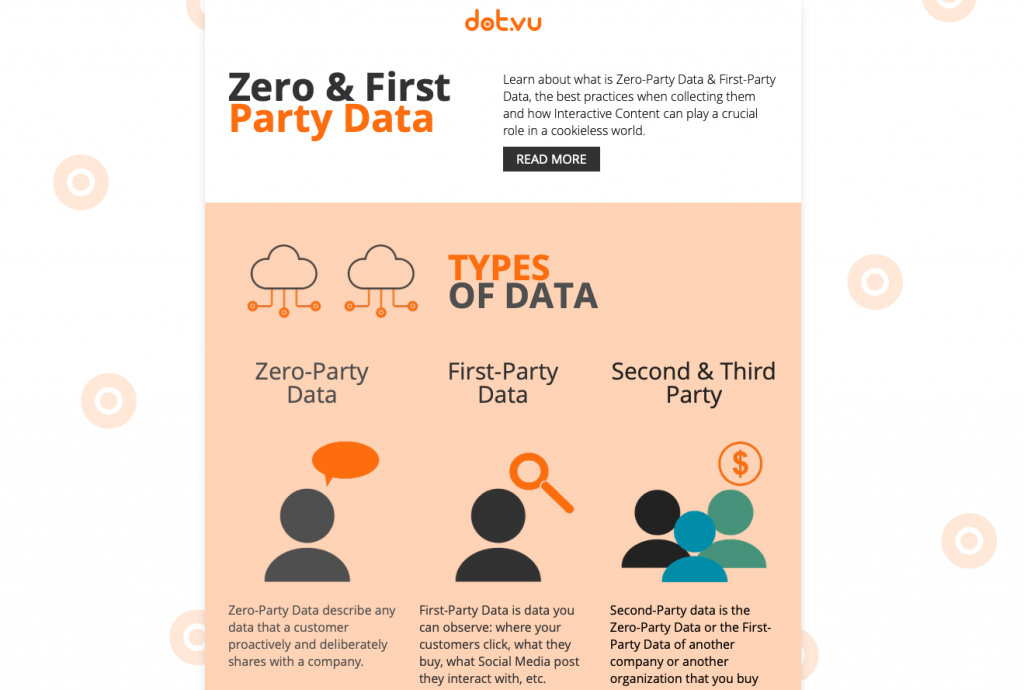
The lifeblood of today’s organisations is customer data. It supports a wide range of organisational tasks and decision-making, including marketing, budgeting, customer retention, email communication, and a plethora of other activities. The proliferation of privacy legislation and the crackdown on third-party cookies, however, have compelled businesses to reconsider their data strategies. While third-party data tracking will never completely go away, businesses will eventually need to adjust their strategy and look for new methods to collect zero- and first-party data; next-generation loyalty programmes may be the best way to do this.
First-Party Data and Zero-Party Data: What Are They?
It’s important to define the many forms of online data that are currently being used before we get into the current landscape of customer data, privacy, and the abandonment of cookies.
Zero-party data is details that clients voluntarily or deliberately provide to you. It is difficult to anticipate a large range of subjects from product preferences to preferred brands to future purchase plans to satisfaction with goods and services, but this type of data is explicit and covers a wide range of topics.
Information that you obtain through your own channels, such as your website, mobile app, POS, etc., is referred to as first-party data. It is thought to be the most reliable and accurate sort of data available, and there are few privacy issues.
Second-party data is first-party information owned by a different company that you can get without going through a middleman. Machine learning algorithms can create more detailed client groups and correctly forecast customer behaviour by combining both first- and second-party data.
Information obtained through sizable data aggregators is referred to as third-party data. Although the reliability and source of this data are frequently in doubt, the sheer volume of data available to businesses allows them to identify new markets and adjust their client targeting accordingly.
The Data Capturing Environment is Changing
A growing number of privacy issues have had a significant impact on how organisations gather and use data. A number of data protection laws, including the ePrivacy Directive and the General Data Protection Regulation (GDPR), have been established by the European Union, allowing website visitors to choose their choices for on-site data tracking.
Additionally, third-party cookies have been gradually phased out by browsers, ending the questionable practise of tracking user activity after visitors leave the original website.
Improved First-Party Data Utilization for More Personalized Communication
Encouragement, acceptance, and allowing customers to appreciate the brand are all parts of loyalty. By itself, having a loyalty programme offers more touchpoints and more first-party data to gather and subsequently use. For instance, you can tell a customer is a devoted, regular customer if they are in your loyalty program’s middle tier. Additionally, you can check a customer’s coupon history to determine whether a low-value discount will be sufficient to reactivate them if they are at risk of leaving your business.
There are several ways in which you can integrate this comprehensive layer of loyalty data into your marketing efforts. First-party loyalty data opens up new opportunities for personalised communications and offers a wonderful approach to improve your customer service, which is one of the most crucial features outside of the actual product. Cost-effective churn prediction is just the beginning.
By enabling lifecycle involvement with your clients at all points in time, having data available and accessible in one location aids in the development of a comprehensive programme. It involves knowing your target market and identifying cues about them along the process.
Here are a few instances of how marketers can engage their clientele:
Birthday emails that surprise and excite recipients, with the incentive based on the customer’s tier or overall purchase volume
Reminder emails are sent to clients when they are nearing a new tier, encouraging them to buy something to advance.
When points or tier membership are ready to expire, send polite notification emails.
Monthly updates on the members’ achievements
Utilizing a Loyalty Program to Maintain Your Data Strategy
Your only dependable source of information in the face of changing data monitoring practises and online privacy restrictions is first- and zero-party data. Loyalty programmes not only assist in gathering that data but also make use of it. Simply make sure there is the right incentive and communication behind it, and clients will be delighted to tell others about your business.
Our specialists are more than pleased to assist if you’d like to talk about the capabilities of a next-generation loyalty programme in greater detail. Call to schedule a demo or submit an RFP.
